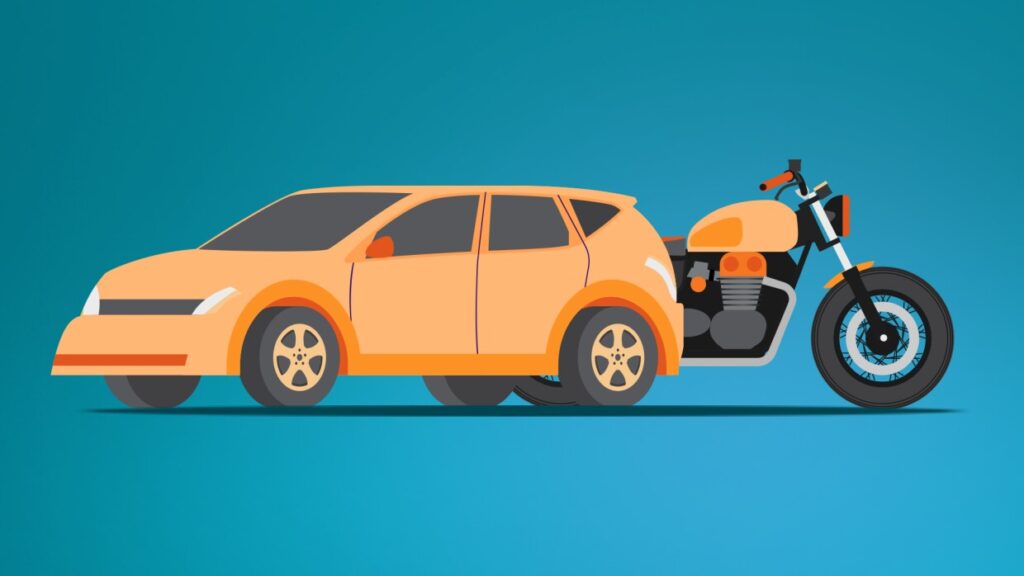Car Insurance vs Bike Insurance: Car insurance is generally cheaper than bike insurance despite insuring a more expensive vehicle. This is because motorcycles are statistically more likely to be in accidents with higher injury risks. Both cover similar liabilities but car insurance usually includes passenger protection, while bike insurance often requires an add-on for this.
When it comes to protecting your vehicle and yourself on the road, insurance is a crucial aspect to consider. Car insurance and bike insurance are two types of insurance policies tailored for different types of vehicles. Let’s delve into the key differences between car insurance and bike insurance to help you make an informed decision.

What is Car Insurance?
Car insurance is a type of insurance policy designed to provide financial protection against physical damage or bodily injury resulting from traffic collisions and against liability that could also arise from incidents in a vehicle. Car insurance typically covers cars, trucks, SUVs, and other four-wheeled vehicles.
Key Features of Car Insurance:
- Comprehensive Coverage: Car insurance policies often include coverage for damage to your vehicle, liability coverage, and coverage for medical expenses.
- Higher Premiums: Car insurance premiums are generally higher compared to bike insurance due to the higher value and repair costs associated with cars.
- Additional Coverage Options: Car insurance policies may offer additional coverage options such as roadside assistance, rental car coverage, and gap insurance.
What is Bike Insurance?
Bike insurance, also known as motorcycle insurance, is a type of insurance policy specifically designed for motorcycles, scooters, and other two-wheeled vehicles. Bike insurance provides financial protection in case of accidents, theft, or damage to the insured vehicle.
Key Features of Bike Insurance:
- Lower Premiums: Bike insurance premiums are typically lower compared to car insurance premiums due to the lower value and repair costs associated with motorcycles.
- Specialized Coverage: Bike insurance policies may offer specialized coverage options tailored to the needs of motorcycle riders, such as coverage for riding gear and accessories.
- Liability Coverage: Bike insurance also includes liability coverage to protect riders in case they are at fault in an accident and cause damage to others’ property or injuries.
Car Insurance vs Bike Insurance
| Aspect | Car Insurance | Bike Insurance |
|---|---|---|
| Vehicle type | Covers cars, SUVs, trucks, etc. | Covers motorcycles, scooters, mopeds, etc. |
| Premium cost | Generally higher due to higher replacement costs | Generally lower due to lower replacement costs |
| Coverage options | Comprehensive, liability, collision, etc. | Similar coverage options (varies by insurer) |
| Deductibles | Typically higher deductibles | Typically lower deductibles |
| Usage restrictions | No restrictions on usage (commute, leisure, etc.) | May have restrictions (mileage, usage type) |
| Safety features | Considered for discounts (airbags, anti-theft) | May impact premium (anti-lock brakes, helmets) |
| Rider/passenger coverage | Usually covers passengers | May or may not cover pillion riders |
| Discounts available | Multi-car, safe driver, bundling, loyalty, etc. | Safe rider, multi-bike, no-claim bonus, etc. |
Risk and Premium Factors
The factors that influence the premiums for “Bike Insurance vs Car Insurance” are somewhat different:
- Risk of Accident and Injury: Motorcycles are considered riskier due to their open nature and the higher likelihood of injury in an accident. This risk is often reflected in higher insurance premiums for motorcycles.
- Vehicle Value: Cars generally have a higher base value than motorcycles. It can lead to higher comprehensive and collision coverage costs.
- Riding Season: Motorcycle riding is often seasonal, which can impact insurance rates. Some insurers offer “lay-up” policies where certain coverages are suspend during off-season months.
- Mileage: Cars are typically used more frequently and for longer distances than motorcycles. Higher annual mileage can increase the cost of car insurance.
Which Insurance is Cheaper?
Motorcycle insurance is generally cheaper than car insurance. On average, it costs half as much as insuring your car. In the U.S., the average motorcycle owner pays $702 for insurance, compared to $1,566 for car insurance. The reason for this difference isn’t primarily about injury rates but rather replacement costs. However, it’s essential to note that costs can vary based on factors like your location & type of motorcycle you own. Keep in mind that each state has different minimum insurance requirements for both cars and motorcycles, so it’s crucial to research the specific requirements in your area.
Passenger Protection
Car insurance policies generally cover passengers in an accident, as long as you have more than just basic liability coverage. Bike insurance, however, typically only covers the rider by default. If you plan to carry a passenger regularly, you’ll need to add passenger cover to your policy.
Choosing Between Car Insurance and Bike Insurance
When deciding between car insurance and bike insurance, consider factors such as the type of vehicle you own, your budget, and your specific insurance needs. If you own both a car and a bike, you may opt for separate insurance policies for each vehicle to ensure adequate coverage.
Conclusion
Both car insurance and bike insurance are essential for protecting yourself and your vehicle on the road. By understanding the differences between these insurance options, you can choose the policy that best suits your needs and provides you with peace of mind while driving or riding.
